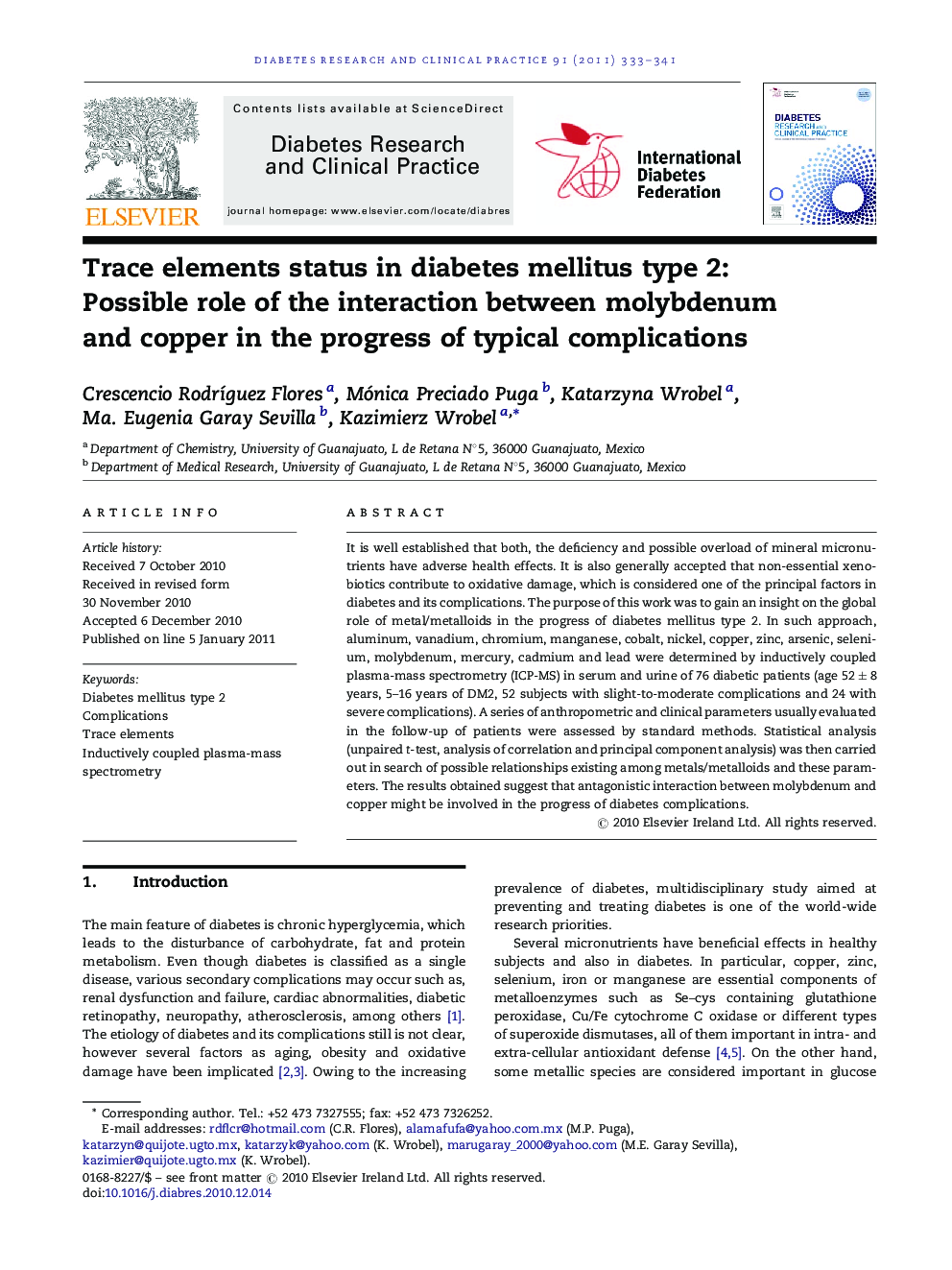| Article ID | Journal | Published Year | Pages | File Type |
|---|---|---|---|---|
| 5900355 | Diabetes Research and Clinical Practice | 2011 | 9 Pages |
Abstract
It is well established that both, the deficiency and possible overload of mineral micronutrients have adverse health effects. It is also generally accepted that non-essential xenobiotics contribute to oxidative damage, which is considered one of the principal factors in diabetes and its complications. The purpose of this work was to gain an insight on the global role of metal/metalloids in the progress of diabetes mellitus type 2. In such approach, aluminum, vanadium, chromium, manganese, cobalt, nickel, copper, zinc, arsenic, selenium, molybdenum, mercury, cadmium and lead were determined by inductively coupled plasma-mass spectrometry (ICP-MS) in serum and urine of 76 diabetic patients (age 52 ± 8 years, 5-16 years of DM2, 52 subjects with slight-to-moderate complications and 24 with severe complications). A series of anthropometric and clinical parameters usually evaluated in the follow-up of patients were assessed by standard methods. Statistical analysis (unpaired t-test, analysis of correlation and principal component analysis) was then carried out in search of possible relationships existing among metals/metalloids and these parameters. The results obtained suggest that antagonistic interaction between molybdenum and copper might be involved in the progress of diabetes complications.
Keywords
Related Topics
Life Sciences
Biochemistry, Genetics and Molecular Biology
Endocrinology
Authors
Crescencio RodrÃguez Flores, Mónica Preciado Puga, Katarzyna Wrobel, Ma. Eugenia Garay Sevilla, Kazimierz Wrobel,
